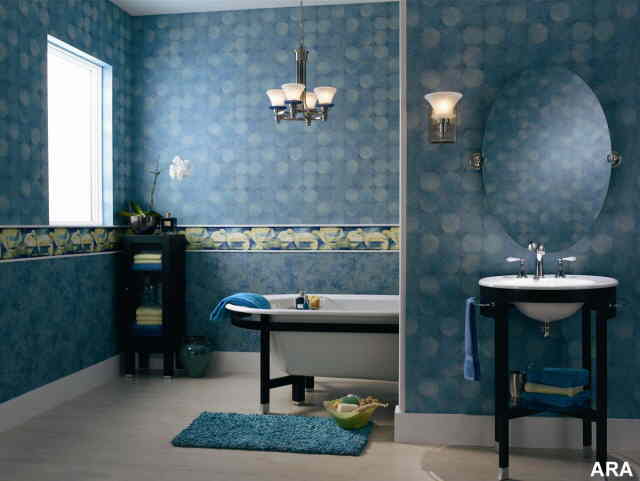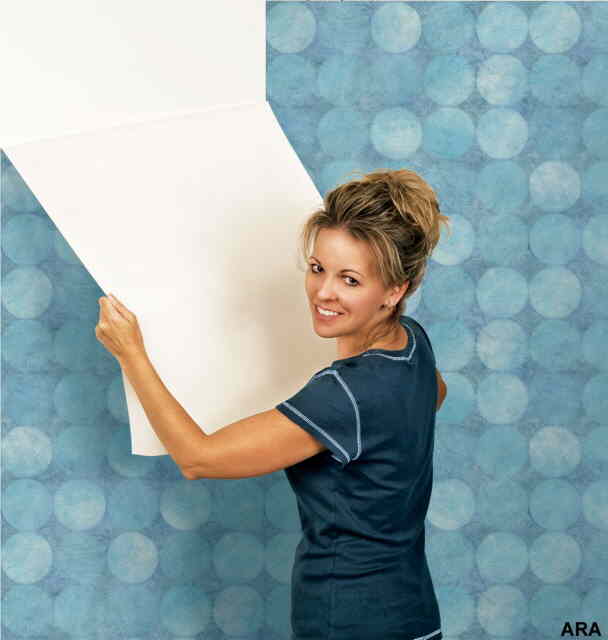|
Wallpaper Trends |
The Latest Home Decorating Tips & Trends in Wall Home Decor |
|
Decorating Tips Wallpaper Trends Cutting Edge How To... |
Do You Want to Have an |
 |
"In the past, the perception of wallpaper has been that it's difficult to install and nearly impossible to remove," says Tim Quinn, president of Chesapeake Wallcoverings. "We know that 90 percent of consumers are doing their own installation and removal. Now, wallpapering an average sized room is an afternoon project, and removal can be accomplished in as little as 15 minutes."
Home decorating programs are increasingly showing designs that incorporate wall coverings. And the faux painting fad seems to be ending, perhaps because consumers have discovered the process is not always as easy as it looks on TV. The time is ripe for wallpaper's resurgence.
Products like Chesapeake's pioneering Easy-Walls collections virtually eliminate the negative issues associated with wallpaper: involved wall preparation; difficult installation including booking; seam separation; peeling; and the deal-breaking difficulty of removal.
Historically, preparing a wall for wallpaper has involved sanding, cleaning solvents, and multiple coats of primer and wallpaper sizing. Easy-Walls requires no preparation other than simply cleaning the wall. The product is designed to adhere to a wall that has been covered with at least two coats of paint, preferably one of primer and one flat latex, Quinn says.
Wallpaper can tear, crease and rip during installation. And if you fail to book it, the seams will separate once it dries on the wall. Because the product is a non-woven mix of natural and synthetic fibers, booking is no longer necessary; it's made to be put on the wall immediately after wetting.
 |
"This removable paper is much more forgiving than typical wallpaper," Quinn notes. "With traditional installation, the paste has to have enough 'slip' to allow you to realign it and move it around on the wall. This paper moves very easily on the wall and you can even take down an entire sheet and put it back on in a new position." Mistakes are easily corrected: simply smooth it with your hands and reapply it to the wall.
Failure to book traditional wallpaper can result in seam separation and peeling. Improper wall preparation in a humid spot like a bathroom can lead to mold growth behind the paper. Because there is no vinyl in non-woven wallpaper, vapor lock, which traps moisture behind the paper, is unlikely to occur. The product is totally breathable, making it ideal for use in high-humidity areas like the bath and kitchen.
Forget the hours of scratching, wetting and scraping or steaming and harsh chemicals associated with removing wallpaper. You can take down removable wallpaper in a matter of minutes, Quinn says. Simply start at a corner and pull, and the entire sheet will come off in one piece. "This product is perfect for anyone who wants to be able to quickly and easily change a look of a room in the future - parents decorating a nursery who know they will need to redecorate as soon as the child grows, or renters who will need quick, clean, easy removal when they move out."
Easy-Walls is currently available from most wallcovering retailers and large home centers. Six design collections, each with 120 or more patterns, are currently available. The per-roll cost of the product is usually $1 to $2 more than regular wallpaper, but is offset by reduced preparation and installation costs. For more information or to see a live demo, visit www.easy-walls.com.
Courtesy of ARA Content
EDITOR'S NOTE: Easy-Walls is a registered trademark of Chesapeake Wallcoverings of Maryland.
